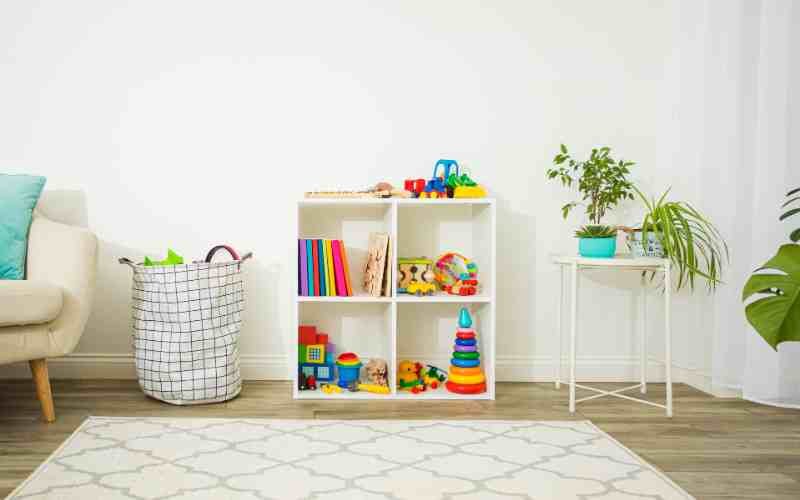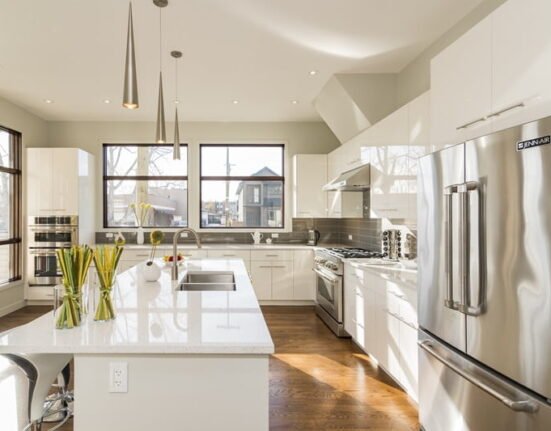A common challenge that the residents of Cordova, TN, face is finding effective storage solutions for small spaces. You could be living in either a cozy downtown apartment or a compact suburban home, but when it comes to maximizing space, maintaining a clutter-free and organized living environment is essential. This article explores various smart storage solutions tailored to small spaces.
-
Utilizing Vertical Space
One of the smartest ways to create more storage in small areas is by utilizing vertical space. This approach takes advantage of the often-underused wall area, providing extra storage without compromising floor space. Installing floating shelves, wall-mounted racks, and hanging organizers are excellent ways to achieve this. In a kitchen, for instance, hanging pots and pans or using a wall-mounted spice rack can free up much-needed cabinet space. In living areas, vertical bookshelves or decorative wall storage can add both functionality and aesthetic appeal.
2. Multi-functional Furniture
Multi-functional furniture is a game-changer in small living spaces. These pieces serve dual purposes, combining comfort and style with practical storage. A classic example is a bed with built-in drawers, offering ample space for clothing or linens. Similarly, storage ottomans provide a place to rest your feet, extra seating, and a hidden storage compartment – perfect for living rooms or bedrooms. Coffee tables with shelves or hidden compartments can also help keep daily clutter out of sight. These versatile furniture pieces are essential for Cordova homes where space is at a premium.
3. Making Use of Storage Units in Cordova
For items that aren’t needed year-round, Cordova storage units offer a practical off-site solution. These units are ideal for storing seasonal decorations, outdoor equipment, or sentimental items that you don’t want to part with but don’t use regularly. When selecting a storage unit, consider factors like size, climate control, and security. To make the most of the space, use stackable bins and clearly label everything. This way, your home stays decluttered, and your belongings are safely stored and easily accessible when needed.
4. Decluttering Regularly
The foundation of maximizing space in small areas is regular decluttering. It’s essential to periodically assess your belongings and decide what to keep, donate, or discard. Adopt a systematic approach by tackling one room at a time and sorting items into categories. A good rule of thumb is if you haven’t used something in over a year, it’s probably safe to let it go. Incorporating decluttering into your routine can prevent the accumulation of unnecessary items and keep your living space open and orderly.
5. Implementing Smart Closet Solutions
Smart closet organization can transform even the smallest closets into efficient storage spaces. Start by maximizing the vertical space with tiered hangers and add extra shelves or hanging organizers for shoes and accessories. Utilize the inside of closet doors by installing hooks or racks for additional hanging options. Space-saving hangers and under-shelf baskets are great for compactly storing clothes and linens. For items used less frequently, top shelves can be utilized effectively. A well-organized closet not only saves space but also makes finding and accessing your belongings much easier.
6. Using Hidden Storage Areas
Small living spaces often have hidden storage opportunities that are easily overlooked. The area under the bed can be used to store out-of-season clothing, extra bedding, or shoes in storage bins or drawers. Over-the-door organizers in bathrooms or closets can hold a variety of items without taking up valuable space. Corner shelves can turn an unused corner into a functional storage area. Even the space above kitchen cabinets can be used for storing less frequently used kitchen items. Identifying and utilizing these hidden spaces can significantly increase your storage options.
7. Adopting a Minimalist Approach
Embracing a minimalist approach to possessions can be incredibly effective in small spaces. This doesn’t mean living with the bare minimum; rather, it’s about keeping only what is necessary and meaningful. Start by reducing the number of duplicate items and decluttering things that no longer serve a purpose or bring joy. A minimalist mindset encourages thoughtful purchases, reducing the influx of unnecessary items into your home. This approach not only frees up physical space but also creates a more serene and manageable living environment.
8. Seasonal Storage Strategies
Employing seasonal storage strategies can help manage space constraints effectively. Rotate your clothing, decorations, and other seasonal items by storing them away when not in use. For example, swap out heavy winter clothing and blankets with lighter summer items as the seasons change. This rotation ensures that only the current season’s items are taking up space in your living areas. Using vacuum-sealed bags for clothing and linens can further minimize the space needed for storage.
9. Modular Storage Systems
Modular storage systems are an excellent solution for small spaces. These systems allow you to customize your storage to fit your specific needs and can be easily reconfigured as those needs change. Options like stackable cubes, adjustable shelving units, and modular drawer organizers give you the flexibility to create storage solutions that fit oddly shaped spaces or serve multiple purposes. The key advantage of modular systems is their adaptability, enabling you to efficiently use every inch of available space.
10. Investing in Quality Over Quantity
When space is at a premium, it’s recommended to focus on the quality of items rather than quantity. This means choosing furniture and storage items that are well-made and durable, as well as versatile. Invest in pieces that offer maximum functionality without taking up too much room. For instance, a high-quality storage bench with built-in compartments can serve as seating, a decorative element, and a storage solution all in one. By choosing quality over quantity, you not only make the most of limited space but also ensure a longer lifespan for your items, reducing the need for frequent replacements.
Just because space is limited doesn’t mean you have to live with clutter. You can create a home that feels open, organized, and spacious by employing the right methods. The key to effective storage in small spaces is to think creatively, make the most of every inch, and regularly reevaluate your storage needs. With these strategies in place, you can transform your compact living space into a comfortable, efficient, and clutter-free environment.










